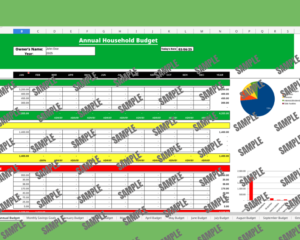Consumer electronics have evolved into an essential aspect of our everyday existence, reshaping our modes of communication, productivity, entertainment, and exploration of the world. With an overwhelming variety of options available in the market, choosing the best consumer electronics can be a daunting task. That’s why we have crafted “The Ultimate Guide to Choosing the Best Consumer Electronics: A Comprehensive Overview” to assist you in making informed decisions.
In this comprehensive guide, we will explore the key factors to consider before buying electronics. Delving into different types of electronic devices, provide tips for researching and comparing products, and offer best practices for making the final decision. Whether you’re looking for a new smartphone, laptop, television, audio device, or home appliance. This guide will equip you with the knowledge and confidence needed to choose the best option for your needs.
In this article, we’ll focus on
- Understanding Consumer Electronics
- Factors to Consider Before Buying Consumer Electronics
- Researching and Comparing Consumer Electronics
Understanding Consumer Electronics

Definition of consumer electronics
Electronics refers to electronic devices that are designed and intended for personal or household use by individuals. These devices are primarily used for entertainment, communication, productivity, and convenience purposes in everyday life. These encompass a wide range of products, from small handheld devices like smartphones and tablets to larger appliances like televisions, audio systems, and home appliances.
The term “consumer electronics” distinguishes these devices from industrial or commercial electronics. They are typically used in professional settings or for specialized purposes. Unlike industrial electronics, consumer electronics are specifically designed to cater to the needs and preferences of individual consumers. Emphasizing user-friendly interfaces, aesthetic appeal, and a seamless integration into everyday life.
Merging Advance Technology
Consumer electronics devices often incorporate advanced technologies, such as microprocessors, sensors, wireless connectivity, and high-resolution displays. Delivering enhanced functionality and performance. They can encompass various categories, including but not limited to:
- Mobile Devices: This category includes smartphones, tablets, smartwatches, and portable media players. Enabling users to communicate, access information, and enjoy multimedia content on the go.
- Computers and Laptops: Personal computers, laptops, and hybrid devices form the core of this category. They are used for productivity tasks, content creation, internet browsing, and gaming.
- Televisions and Home Entertainment Systems: These devices provide audio and visual entertainment, ranging from flat-screen televisions. Equipped with high-definition displays to home theater systems with surround sound capabilities.
- Audio Devices: This category includes headphones, earphones, speakers, soundbars, and other audio equipment designed to enhance the audio experience for music, movies, and gaming.
- Home Appliances and Smart Devices: This category encompasses a wide range of household devices. Including kitchen appliances like refrigerators, ovens, and coffee makers. As well as smart home devices like thermostats, security systems, and virtual assistants.
Consumer electronics have become an integral part of modern life, providing convenience, entertainment, and connectivity. The definition of consumer electronics continues to evolve as new technologies emerge, offering consumers an ever-expanding array of innovative and interconnected devices to enhance their daily experiences.
Evolution of consumer electronics over time
The evolution of consumer electronics over time has been marked by rapid advancements in technology, innovative designs, and increasing integration into our daily lives. From the earliest electronic devices to the smart devices we use today. The evolution of consumer electronics has transformed the way we communicate, entertain, work, and interact with the world around us.
Early Beginnings: The origins of consumer electronics can be traced back to the late 19th and early 20th centuries with the development of basic electronic devices like radios, phonographs, and televisions. These devices were often large, bulky, and limited in functionality.
Miniaturization and Portability: In the mid-20th century, consumer electronics started to become smaller and more portable. Transistor radios, portable cassette players, and pocket-sized calculators revolutionized personal entertainment and communication. The development of integrated circuits and microprocessors further fueled miniaturization and paved the way for the emergence of handheld devices. Like portable televisions and early mobile phones.
Evolution of Tech: From Analog to AI, Sustainability, and Connectivity
- Digital Revolution: The transition from analog to digital technology in the late 20th century had a significant impact on consumer electronics. Digital cameras replaced film-based cameras, CD players and MP3 players replaced cassette tapes, and digital televisions delivered higher quality and more interactive viewing experiences. This era also witnessed the rise of personal computers and the Internet, transforming how people work, access information, and communicate.
- Convergence and Connectivity: The 21st century witnessed a major shift in consumer electronics with the convergence of technologies. Smartphones emerged as multifunctional devices that combined communication, computing, entertainment, and internet access into a single portable device. This era also saw the emergence of smart TVs, wearable devices, and home automation systems, all interconnected through wireless connectivity and the Internet of Things (IoT).
- Artificial Intelligence and Voice Control: With the advancement of artificial intelligence (AI) and voice recognition technologies, consumer electronics have become smarter and more intuitive. Virtual assistants like Siri, Alexa, and Google Assistant have become commonplace, allowing users to control their devices through voice commands. AI-driven features, such as facial recognition, voice translation, and personalized recommendations, have further enhanced the capabilities of consumer electronics.
- Internet Everywhere: The proliferation of high-speed internet connectivity has transformed consumer electronics into always-connected devices. Streaming services, cloud storage, and online marketplaces have become integral parts of our digital lives, enabling seamless access to content, applications, and services across various devices.
- Sustainability and Energy Efficiency: In recent years, there has been an increasing focus on sustainability and energy efficiency in consumer electronics. Manufacturers are striving to develop products that minimize environmental impact, incorporate recyclable materials, and reduce power consumption through energy-efficient designs.
Factors to Consider Before Buying Consumer Electronics

Purpose and usage requirements
The purpose and usage requirements of consumer electronics play a crucial role in determining the right devices for individuals. Understanding the purpose and considering the specific usage requirements are essential steps in choosing the best consumer electronics that align with one’s needs, preferences, and lifestyle.
Purpose
Consumer electronics serve a multitude of purposes, each tailored to meet individual needs and interests. At the core of their functionality is communication, with devices like smartphones, tablets, and computers designed to facilitate voice calls, text messaging, video calls, and seamless social media interactions. These gadgets not only connect people but also form the foundaton of modern digital communication.
Moreover, consumer electronics excel in the domain of entertainment, delivering a diverse range of options for leisure and amusement. Whether it’s enjoying movies, streaming music, indulging in video games, or immersing in e-books, devices such as televisions, audio equipment, and portable media players cater to our desire for recreation and leisure.
In the realm of productivity, consumer electronics have become indispensable tools. Laptops, desktop computers, and tablets empower users to accomplish tasks like document creation, internet browsing, email management, and project work. These devices enhance efficiency and support professional and educational endeavors.
Access to information is another crucial purpose served by consumer electronics. They offer a gateway to a vast reservoir of knowledge, encompassing news updates, research materials, educational resources, and extensive online databases. In this way, they contribute significantly to learning and staying informed.
Furthermore, smart devices and appliances drive the purpose of home automation. They bring convenience and control to the domestic sphere by automating and managing various aspects of home life, including lighting, temperature, security, and energy consumption. The integration of these technologies has led to more efficient, secure, and comfortable living environments, transforming the concept of a “smart home” from a vision of the future into a practical reality.
Usage Requirements
Understanding your specific usage requirements is essential when choosing the right consumer electronics device. These requirements can vary based on factors like performance, portability, connectivity, storage and memory, and specialized features.
Firstly, performance considerations are paramount. Some users demand high-performance devices to tackle resource-intensive tasks such as gaming, video editing, or software development. On the other hand, individuals with a focus on everyday use often seek devices that offer a balance between performance and power efficiency.
Secondly, the need for portability plays a significant role in decision-making. Frequent travelers tend to favor lightweight and compact devices that are easy to carry. In contrast, those who prioritize larger screens or longer battery life might opt for less portable, but more functional, options.
Connectivity is another critical aspect to ponder. It involves factors like compatibility with wireless technologies such as Wi-Fi and Bluetooth, the presence of various ports for peripheral devices, and, for mobile devices, support for cellular networks.
Storage and memory considerations vary widely among users. Those with substantial data storage needs, like photographers or videographers, require devices with ample storage capacity. Others may prioritize devices with expandable memory options to cater to their specific needs.
Lastly, specialized features can make or break a choice. Some users may require devices with advanced camera capabilities, water resistance, stylus support, or specialized software compatibility. Thus, understanding these diverse usage requirements is key to selecting consumer electronics that align with your individual needs and preferences.
By understanding the purpose and usage requirements, individuals can identify the essential features, specifications, and functionalities needed in their consumer electronics devices. This knowledge enables them to make informed decisions and choose devices that best cater to their specific needs and enhance their overall user experience.
Key Features and Specifications
Features and specifications are key aspects to consider when choosing consumer electronics devices. They provide detailed information about the functionalities, capabilities, and technical characteristics of a device. Understanding the features and specifications allows individuals to assess whether a particular device meets their specific requirements and preferences.
Features refer to the distinct functionalities and capabilities offered by a consumer electronics device. These features can vary widely across different types of devices and brands. Some common features to consider include:
- Display: The display features include screen size, resolution, brightness, color accuracy, and touchscreen capabilities. These factors impact the visual experience when using devices like smartphones, tablets, laptops, and televisions.
- Camera: Camera features encompass resolution, image quality, low-light performance, optical zoom, image stabilization, and various shooting modes. These features are particularly important for users who prioritize photography or video recording capabilities.
- Connectivity: Connectivity features include wireless options such as Wi-Fi, Bluetooth, NFC, and cellular network compatibility. The availability of ports like USB, HDMI, and audio jacks also play a role in connecting external devices or peripherals.
- Operating System: The operating system (OS) defines the user interface, app ecosystem, and overall functionality of a device. Popular OS options include Android, iOS, Windows, macOS, and Linux, each offering unique features and compatibility with specific applications.
- Battery Life: Battery life is a crucial feature to consider, especially for portable devices like smartphones, laptops, and tablets. Longer battery life allows for extended usage without the need for frequent charging.
- Storage Capacity: The storage capacity determines the amount of data that can be stored on a device, such as photos, videos, applications, and documents. Devices may offer different storage options, including internal storage and expandable memory through SD cards or external drives.
- Biometrics and Security: Biometric features like fingerprint sensors or facial recognition offer convenient and secure methods for unlocking devices and protecting personal data.
Specifications
Specifications provide detailed technical information about the hardware and performance capabilities of a device. They help assess the device’s processing power, memory capacity, connectivity options, and more. Common specifications to consider include:
When choosing consumer electronics, several key hardware specifications play a vital role in determining the device’s overall performance and functionality.
The processor, often referred to as the CPU, serves as the brain of the device. It significantly influences processing speed and overall performance. Processors from manufacturers like Intel, AMD, Qualcomm, and Apple are commonly used in various consumer electronics devices.
Random Access Memory (RAM) is crucial for multitasking capabilities and system responsiveness. Devices with higher RAM can smoothly handle multiple applications simultaneously, ensuring efficient operation.
The type of storage, such as Solid-State Drives (SSD) or Hard Disk Drives (HDD), impacts data access speed, reliability, and durability. SSDs are known for faster data retrieval, while HDDs offer greater storage capacity.
Graphics processing units (GPUs) or integrated graphics are vital for graphics-intensive tasks like gaming, video editing, or 3D rendering. A powerful GPU enhances the device’s ability to handle visually demanding applications.
Connectivity specifications encompass Wi-Fi standards (e.g., Wi-Fi 6), Bluetooth versions, cellular network support (e.g., 4G, 5G), and the availability of ports and interfaces (e.g., USB-C, HDMI, Thunderbolt). These determine the device’s ability to connect to networks and peripherals.
Physical dimensions and weight are essential considerations for portability and ergonomics. These specifications dictate the device’s size, thickness, and overall form factor, affecting ease of use and mobility.
Sound quality is another critical factor. It includes speaker configuration, audio codecs, and support for immersive audio technologies like Dolby Atmos. Superior sound quality enhances the overall audiovisual experience, especially for entertainment and multimedia applications.
By considering the features and specifications of consumer electronics devices, individuals can assess whether a device aligns with their specific needs, preferences, and usage requirements. This knowledge enables them to make informed decisions and choose devices that offer the desired functionalities and performance for an enhanced user experience.
Researching and Comparing Consumer Electronics

Online research
Online research plays a crucial role in the process of choosing the best consumer electronics. It allows individuals to gather information, compare options, and make informed decisions based on their specific needs and preferences. Conducting thorough online research involves utilizing various resources and platforms to explore product details, user reviews, expert opinions, and pricing information. Here are some key aspects of online research:
- Manufacturer Websites: Visiting the official websites of manufacturers provides direct access to comprehensive information about their products. These websites typically offer detailed product descriptions, specifications, and feature lists, allowing individuals to gain a thorough understanding of what each device offers.
- E-commerce Platforms: Online marketplaces and e-commerce platforms provide a wealth of information on consumer electronics. They offer product listings, customer reviews, ratings, and pricing details. Individuals can browse through a wide range of options, compare prices, and read firsthand experiences of other users to assess the quality and performance of specific devices.
- Technology Review Websites and Forums: Technology review websites and forums are valuable resources for accessing expert opinions and in-depth analyses of consumer electronics. These platforms often provide comprehensive reviews, comparisons, and recommendations based on hands-on testing and evaluation. Engaging with forums also allows individuals to ask questions, seek advice, and learn from the experiences of other users.
- Social Media and Influencer Channels: Social media platforms, including YouTube, Instagram, and Twitter, offer a wealth of user-generated content related to consumer electronics. Influencers, tech enthusiasts, and experts often share their reviews, unboxing experiences, and recommendations. Following relevant channels and engaging with the community can provide valuable insights and firsthand perspectives on different devices.
- Customer Reviews and Testimonials: Reading customer reviews and testimonials on e-commerce platforms or dedicated review websites can provide valuable insights into real-world experiences with specific consumer electronics devices. These reviews offer information about reliability, performance, durability, and user satisfaction, helping individuals gauge the overall quality and suitability of a product.
Online Source Verification
It is important to note that while online research is a valuable tool, it is essential to verify the credibility and reliability of the sources. Considering multiple sources and cross-referencing information helps ensure a balanced and comprehensive understanding of the consumer electronics being researched.
By leveraging online research, individuals can gather valuable information, opinions, and experiences that aid in the decision-making process. This knowledge empowers them to make informed choices and select consumer electronics devices that best meet their needs, preferences, and budget.
Technology review websites and forums
Technology review websites and forums are online platforms that provide valuable information. In terms of expert opinions, and user experiences related to consumer electronics devices. These platforms serve as trusted sources for individuals seeking in-depth knowledge, comprehensive reviews, and recommendations before making purchasing decisions. Here’s a closer look at technology review websites and forums:
Reviewing and researching consumer electronics is a multifaceted process that offers diverse sources of valuable information. Expert reviews and analyses, often provided by technology review websites, are conducted by knowledgeable individuals who thoroughly evaluate these devices. They assess factors like performance, design, user interface, and battery life, providing insights into the strengths and weaknesses of products.
Additionally, hands-on testing is a common practice, wherein reviewers spend extended time with the devices. Simulating real-world scenarios to deliver objective feedback. Comparisons between similar products are a regular feature, offering a side-by-side assessment of features, specifications, and overall value, helping consumers make well-informed decisions.
User-generated content on technology forums plays a pivotal role, as tech enthusiasts and knowledgeable users share their experiences, tips, and troubleshooting advice. Engaging with these communities facilitates the exchange of valuable insights and information. Similarly, these forums encourage community interaction, allowing users to seek advice, ask questions, and participate in discussions regarding device features, troubleshooting, and comparisons.
Unlocking the Power of Unboxing and Reviews for Smart Consumer Choices

Unboxing and demo videos, prevalent on platforms like YouTube, provide visual representations of consumer electronics, offering a detailed look at their design, user interface, and key features. These videos enable potential buyers to gain a better understanding of the devices, ultimately aiding in making informed purchasing choices. Together, these resources empower consumers to navigate the dynamic world of consumer electronics, equipping them with knowledge and insights from various perspectives.
When using technology review websites and forums, it’s important to consider multiple sources, cross-reference information, and assess the credibility of the platforms and reviewers. This helps ensure a balanced and comprehensive understanding of the consumer electronics being reviewed.
By leveraging technology review websites and forums, individuals can access expert insights, detailed evaluations, and real-world experiences related to consumer electronics devices. This knowledge empowers them to make informed decisions and choose devices that best align with their needs, preferences, and budget.
Conclusion
In conclusion, understanding consumer electronics and their evolution over time is essential for making informed decisions in the realm of technology. By grasping the definition of consumer electronics and witnessing their remarkable progression, we gain valuable insights into the diverse landscape of modern devices. Similarly, considering factors such as purpose, usage requirements, features, and specifications allows us to align our choices with our specific needs and preferences. Conducting thorough online research empowers us to explore a vast array of options. Compare products, and access customer reviews, enabling us to make well-informed decisions.
Armed with this knowledge, you can navigate the ever-changing world of consumer electronics with confidence. Selecting devices that seamlessly integrate into our lives, enhancing our productivity, entertainment, and communication experiences. Remember, taking the time to understand, evaluate, and research consumer electronics ensures that you make choices that best suit your individual needs. Finding preferences provides you with technology that truly enhances your daily life.
Shop Manager,
Michael
If you find this article informative? Share on your preferred Social Media and check out my other blog articles.





